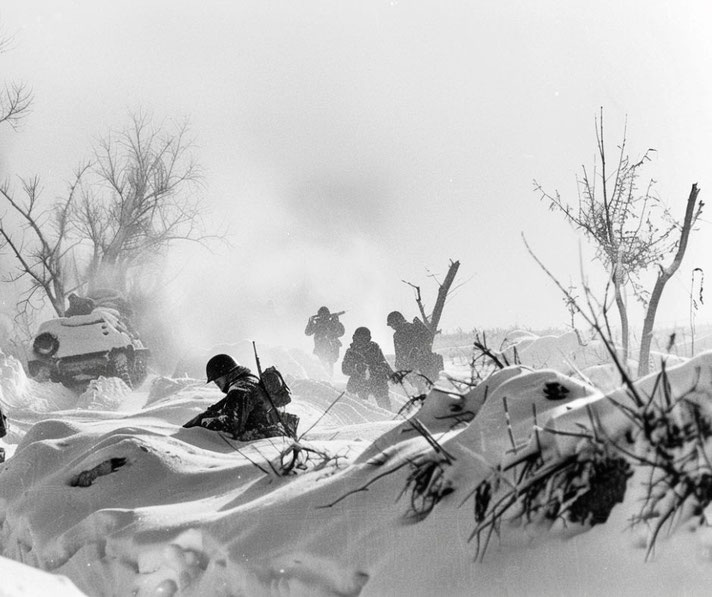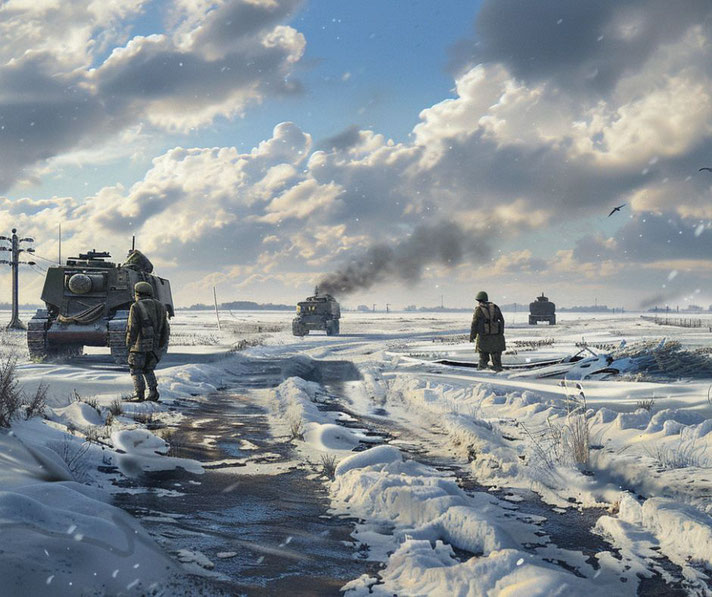When Hitler betrayed Stalin: Operation Barbarossa and the invasion of Soviet Russia

Operation Barbarossa was the codename for Nazi Germany's invasion of the Soviet Union during World War II.
When the operation was launched, it initially went quite well, with the Nazis capturing major cities and significant numbers of prisoners.
However, they were not prepared for the sudden onset of the harsh Russian winter, and supplies started running low.
This brief respite allowed the Soviets eventually mount a concerted counterattack, which led to the end of Operation Barbarossa.
Enemies become friends: The Nazi-Soviet Pact
Before Operation Barbarossa, Nazi Germany and Soviet Russia had been allies in World War Two.
The two leaders, Hitler and Stalin, had even signed a non-aggression pact in August 1939, known as the Molotov–Ribbentrop Pact.
As part of this pact, they agreed to divide up Poland between them, with the USSR getting the eastern portion and Germany seizing the west.
In addition, the Nazis also agreed not to interfere with Soviet expansion into Finland, Latvia, Estonia and Lithuania.
As a result, the Baltic States (Latvia, Estonia, Lithuania) were occupied and annexed by the Soviet Union in 1940, while Finland fought the Winter War and the Continuation War against the USSR, in an attempt to maintain its independence.
However, Hitler signed the Molotov–Ribbentrop Pact dishonestly. He fully intended to betray Stalin at some point but did not want to provoke him too early.
Why did Hitler want to invade the Soviet Union?
There were several important reasons why Hitler decided to invade the Soviet Union.
Firstly, he saw it as an opportunity to finally defeat communism, which Nazism was fundamentally opposed to.
Secondly, he also wanted to plunder the resources of the Soviet Union, which could be used to help support the German war effort.
Thirdly, Hitler believed in the concept of Lebensraum, or "living space," which called for the expansion of Nazi Germany into Eastern Europe to provide more living space for the German people.
So, on 18 December 1940 Hitler issued Führer Directive 21 (The "Barbarossa Decree") which called for the invasion of the Soviet Union.
The directive stated that the main goals of the operation were to:
- destroy the Soviet armed forces and annihilate communism
- secure Lebensraum in the east for the German people
- seize control of the economic resources of the Soviet Union
- prevent the Soviets from ever again becoming a threat to Nazi Germany.
Hitler's delay to help Mussolini
The invasion of Soviet Russia was originally slated for May 1941, which Hitler believed would give his armies enough time to capture the key cities of Leningrad, Moscow and Kiev before winter.
However, Hitler had to delay this initial start date in order to deal with a crisis created by him most important ally: Mussolini.
Germany had to divert some of its resources and men to help secure the Balkans, particularly after Italy's growing difficulties in their invasion of Greece.
It was not until June that Hitler was once more in a position to give the 'green light' to the start of Operation Barbarossa.
However, the one-month delay would become a crucial factor in the overall success or failure of the mission.
The invasion of Russia
Finally, on June 22, 1941, Nazi Germany launched their invasion the Soviet Union with three million troops.
The Nazo forces were split into three separate army groups: Army Group North, which invaded Estonia and Latvia; Army Group Centre, which invaded Lithuania, Belarus and Ukraine; and Army Group South, which invaded the Crimea and Romania.
Despite being warned by his intelligence services of Hitler's impending betrayal, Stalin was reportedly in disbelief when the invasion began, which led to early unpreparedness and confused disarray within Soviet ranks.
Within the first few weeks of the invasion, the Nazis had captured major Soviet cities such as Kiev, Minsk and Rostov.
Army Group South, under the command of Field Marshal Gerd von Rundstedt, played a key role in the capture of Kiev in September 1941, resulting in a massive encirclement and the capture of over 450,000 Soviet troops.
Other battles went well for the Germans as well. Within a few months of the invasion's start, they had reached Leningrad in the north, and they reached the outskirts of Moscow by September.
IN particular, the Siege of Leningrad, which was initiated by Army Group North in September 1941, would become one of the longest and most destructive sieges in history.
But the most important city for the German to capture was the capital of Moscow.
If it could be seized, the Soviet government would lack their most important resources in order to maintain their military defences.
So, Hitler launched Operation Typhoon on September 30 which focused on the city of Moscow itself.
By the end of November 1941, Nazi Germany had captured large amounts of territory and resources from Russia.
They also succeeded in taking Ukraine's breadbasket, which dealt a major blow to the Soviet war effort.
Therefore, it looked as if Operation Barbarossa would be another stunning success of the Nazi Blitzkrieg attack strategy.

The early arrival of the harsh Russian winter
However, the Germans were not prepared for the dramatic start to the harsh Russian winter, which arrived early in December 1941.
As a result of the heavy snows and rain, the German advance slowed down significantly due to rapidly deteriorating road conditions.
In addition, temperatures dropped to as low as -45 degrees Celsius. As a consequence, the German army faced increasing logistical challenges.
The vast distances and poor infrastructure of the Soviet Union made it almost impossible to transport enough food, fuel, weapons, medical supplies, and ammunition to the Nazi forces.
The further the Germans advanced into Soviet territory, the harder it was to reach them with supplies.
Therefore, as a result of these difficult conditions, Hitler could see that his initial plan to take Moscow before winter would not succeed.

The Soviet counterattack
As the Nazi forces were struggling to cope, on the 5th of December 1941, the Soviet Union finally mounted a counteroffensive against the Nazis at Moscow.
Soviet forces under leaders like Zhukov were decisive in this eventual Soviet counterattack.
Soon, the Soviets were able to push back the Germans from the suburbs of the city and prevent them from capturing Moscow.
However, it came at heavy cost in human life: over one million people died on both sides during this battle.
Frustrated with the way the battle was turning out, in December 1941, Hitler personally took over control of the army and issued orders on how to win the Battle of Moscow.
Initially, the German army was ordered to take up strong defensive positions.
Short of resources and overwhelmed, the Nazi soldiers continued fighting around Moscow until April 1942, when they were finally ordered to withdraw.
By early 1944, the German army was in full retreat and had suffered over one million casualties during Operation Barbarossa.
The Soviets were able to push them all the way back into Germany by May 1945, and they captured Berlin in April of that year.
What do you need help with?
Download ready-to-use digital learning resources
Copyright © History Skills 2014-2024.
Contact via email
With the exception of links to external sites, some historical sources and extracts from specific publications, all content on this website is copyrighted by History Skills. This content may not be copied, republished or redistributed without written permission from the website creator. Please use the Contact page to obtain relevant permission.





